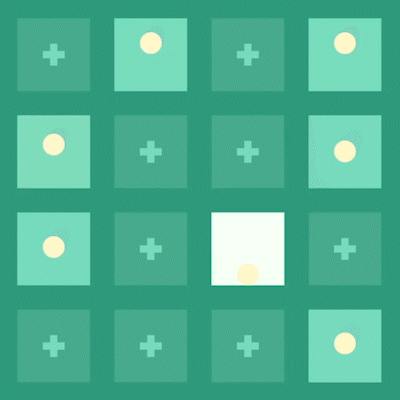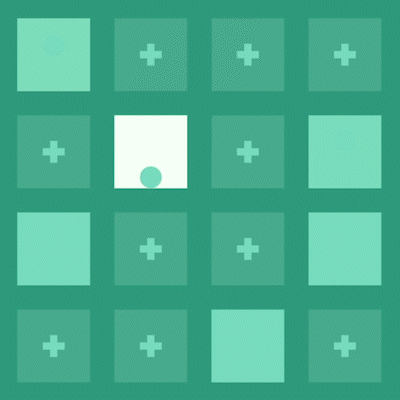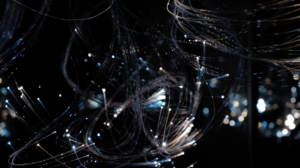Capitol piece
It’s a bit difficult to tell if I’m on the right track with this, but I’ll continue to iterate with the hope of being able to at least submit something that looks effective filmed; then tighten it up if/when we’re allowed to go in and view it in person.
The new iteration generally works better than the previous one, with some notes:
- The wave forward along the ceiling whenever the bass note changes doesn’t quite work. I think I might change this to a wave that lasts for the entire length of the shorter bass note changes, perhaps somehow with a repeating pulse that slowly decreases in pulsewidth until it stops at the next note change.
- The animation on the walls still feels a little loose. I think I’ll change the wave to a square/pulse instead of the current ramp.
- On the first sub bass drop around 6:30, the lighting doesn’t cut out as with the other changes. I must have missed a fadeout time or something.
Overall I think it’s progressing well. It’s definitely an exercise in restraint. I would love to make something completely ridiculous for the Capitol someday, but in the meantime I think it’s good to learn the system by staying very controlled.
Phase
I’ve started to implement some of the changes suggested in class; notably, a flash whenever a ball hits the base of the box, and the ball starting at the base rather than middle upon clicking. I’ve implemented these as URL parameters, so it’s possible to allow for variations without having to duplicate the files.
Another thing I discovered is a potentially hypnotising effect from making the ball colour the same as the square background. Here’s how it looks with the standard ball colour:

Ignore the weird comet-like trails coming off the balls, that’s a GIF artefact.
Changing the ball colour to the same as the activated square background, however, results in this effect:

It could go either way, so I’ve parameterised that feature as well. I think, in a way, it looks more hypnotic, as it’s not clear when the ball will bounce again, though is somewhat predictable due to the regular timing.
Using URL parameters like that has really opened up the possibilities for my other browser works, in that I’m now able to save basic states without requiring any local or server-based data. As usual, I’ve been digging deep into the p5js reference site (Ye, Masso & McCarthy 2021) to find my way through these additional functions.
I’m still looking for an effective way to allow for some degree of interaction between users, even a way to record “scores” or messages on the server for other users to access, which will allow me to transform these works into browser-based games. I may have to move away from p5js and into more specific game programming environments in order to achieve this.
Collaborative projects
The latest iteration of my music for Pat’s Capitol work is getting closer to having an actual structure:
I have a few notes about what to change in the next iteration, mostly chord progressions and adding more effective transitions between sections, but it’s really coming along.
Pat’s other project is really coming along nicely:

It’s an opportunity to go a lot more abstract than many of the other projects I’ve created for the program, which excites me greatly. Yesterday,I happened to view Pat’s latest video while getting sound together for an unrelated assignment. The audio I was recording at the time seemed to fit really well with the visuals, so I’ll be refining that discovery in the next few days. Here’s what it sounds like:
There’s something really interesting about how it sounds with mostly high-register tones, especially coupled with the limited medium of the fibre optic strands. It feels ethereal, but futuristic at the same time, and reminds me of some of the themes of Deus Ex (Ion Storm, 2000).
Other research
Just as I loaded up my YouTube history I saw that Mal had another video:
I really need to talk to him about polyrhythms sometime. I’ve been very interested in the idea of ambiguous, or multi-purpose rhythms for a long time, and it’s good to see someone put them into practice.
~
The experiments with high register tones for Pat’s fibre optic sculpture have once again brought up the idea of using combination tones:
While being conscious of potential hearing damage or other unpleasant effects of high pitched sound, I’d like to try embedding some other sound using the above technique—perhaps a secondary melody that complements the melodic content of the existing audio.
~
I reached out to fellow generative artist William Fields, as I noticed he is also creating synchronised audio-visual works (though, much farther along in the process than I), and it was nice to hear back from him. While he hasn’t written anything on his creative practice, I found several useful techniques and concepts in this video he linked:
His points on creating a system and iterating, rather than starting from scratch, resonated with me, because I have a tendency to reinvent the wheel every time I start a new project. As I’m getting more into programming, this makes less sense, and I think I’ll start developing my own libraries for things, for example, a synthesis engine, or sequencer, that can be saved as a separate file and referenced in future projects.
The segment on limiting controls via macros was quite inspiring as well. I’ve done a small amount of this in my synth programming, in systems where I don’t have access to a large amount of individual physical controls, but I think I can apply this to my software interfaces as well, once my works necessitate on-screen controls.
He also mentioned tuned randomness, something which I’ve been trying to play with for my generative sequencers, but never pushed too far. His ideas on using non-linear functions to weight randomness towards a certain point make a lot of sense.
References
Ye, Q, Masso, E, & McCarthy, L 2021, p5js reference, p5js.org, viewed 1 October 2021, <https://p5js.org/reference/>.
Ion Storm 2000, Deus Ex, PC game, Eidos Interactive Ltd/Square Enix, London.
Webb, M 2021, 8 against 13 Blurred PolyPolyRhythm… a work in progress, YouTube, 4 October, viewed 4 October 2021, <https://www.youtube.com/watch?v=SKC8mUt8iWY>.
Neely, A 2017, Combination Tones, YouTube, 31 October, viewed 3 October 2021, <https://www.youtube.com/watch?v=73_CiAYX00k>.
Fields, W 2020, Augmented Creativity (as Illustrated Through My Creative Journey), YouTube, 2 May, viewed 1 October 2021, <https://www.youtube.com/watch?v=LmGiV_ht5ak>.